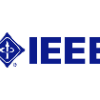Low-power wireless IoT networks have traditionally operated over a single physical layer (PHY) -- many based on the IEEE 802.15.4 standard. However, recent low-power wireless chipsets offer both the IEEE 802.15.4 and all four PHYs of the Bluetooth 5 (BT 5) standard. This introduces the intriguing possibility that IoT solutions might not necessarily be bound by the limits of a single PHY, and could actively or proactively adapt their PHY depending on RF or networking conditions (e.g., to offer a higher throughput or a longer radio range). Several recent studies have explored such use-cases. However, these studies lack comprehensive evaluation over various metrics (such as reliability, latency, and energy) with regards to scalability and the Radio Frequency (RF) environment. In this work we evaluate the performance of IEEE 802.15.4 and the four BT 5 2.4GHz PHY options for the recently completed IETF 6TiSCH low-power wireless standard. To the best of our knowledge, this is the first work to directly compare these PHYs in identical settings. Specifically, we use a recently released 6TiSCH simulator, TSCH-Sim, to compare these PHY options in networks of up to 250 nodes over different RF environments (home, industrial, and outdoor), and highlight from these results how different PHY options might be better suited to particular application use-cases.
翻译:低功率无线 IOT 网络传统上运行于单一物理层(PHY) -- -- 其中许多基于IEE 802.15.4 标准。然而,最近的低功率无线芯片芯片提供了IEE 802.15.4 和蓝牙5 (BT5) 标准中的所有四种物理物理分流。这带来了一种令人感兴趣的可能性,即IOT 解决方案不一定受单一物理分流的限制,并且可以根据RF或网络条件(例如,提供更高的输电量或更长的无线电射程)积极或积极主动地调整其物理分流。最近的一些研究探讨了这种使用案例。然而,这些低功率的无电芯片芯片对各种计量(如可靠性、延缓度和能量)以及蓝牙5 (BTTT5) 标准提供了全面的评估。 在这项工作中,我们评估IEEEEE 802.15.4 和四 BT 5 2.4 GHHz PHY 选项的性能和高功率无线标准可能取决于最近完成的IETTF THTF 6 (我们的最佳知识,这是首次工作,直接比较了这些物理-HIS 选择,最近在相同的环境中的PHIS 。




